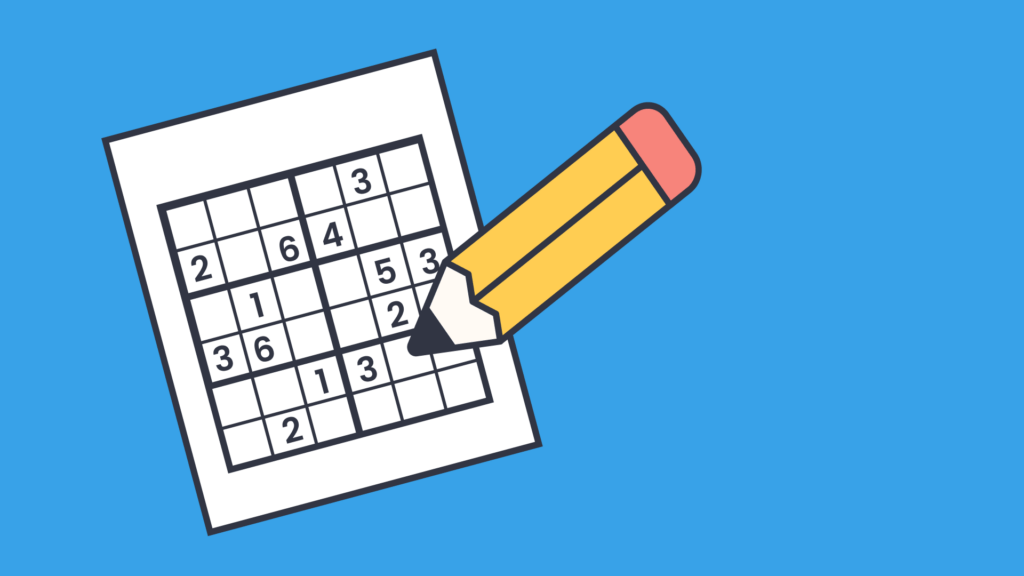11 Concentration games to help students improve their focus
In this guide
Have you ever wished for an easy way to boost your students’ concentration and focus? As teachers, we know that “concentration allows [students] to understand and use available information or resources judiciously to solve problems more efficiently” (Chrysalis Educare). If concentration and focus are key factors of academic success in the classroom, how do we quickly and efficiently build these skills?
In the fast-paced environment our students live in, concentration and focus are becoming increasingly more difficult skills to master in the classroom. In my 5th Grade classroom, I know that a lack of focus and concentration can lead to academic difficulties or overall distractions during lessons. My students who struggle with focusing are more likely to miss assignments, not understand material, or have lower grades.
I wanted to find easy ways for my students to work on concentration skills and improve their overall focus. As a teacher, there seems to be never enough time in the day, however, planning to incorporate low-preparation and easy concentration practice as part of my daily or weekly lesson planning has been a great addition to the day and my students love it! Incorporating short and easy concentration games act as a brain break or movement break for students in the classroom. Investing a few minutes into your students’ focus and concentration will pay off throughout the school year and beyond!

Concentration games offer more than just entertainment or brain breaks in the classroom. These games provide a structured opportunity to practice improving attention spans, practicing concentration, and sharpening focus- all while having fun and building classroom community.
The following games offer students and teachers ways to practice and hone in concentration and focus skills through group activities, problem-solving, memory retention, and critical thinking. These games effectively train the brain to concentrate better and will improve students’ focus on tasks in the classroom and in life. These games can be adapted to meet the needs of your unique individual group of students.
Check out this video to learn more about why concentration is a valuable skill in 21st century learning!
1) Math Simon Says
Age Range: Grade K-5
Special Considerations: Space to move
Math Simon Says is a low-prep and simple way to practice concentration skills with our youngest learners. During this classic game, students are focusing on “Simon” who is giving simple instructions like “touch your nose.” The catch is that students need to wait until they hear “Simon says…” before the action! Math Simon Says provides an educational twist that students of any age can play to practice Math skills! Start with the classic phrases such as “touch your nose,” then as students have a good understanding of the game add in Math facts! Some examples are, “hop on one foot 3 + 1 times” or “jump up 6 x 1 times.” This tests students’ concentration while also reinforcing Math facts and procedures!
Procedure:
- Choose one adult or student to play as “Simon”
- Simon instructs the group to complete certain tasks (Ex. touch your toes, jump on one foot, spin in a circle)
- Students only complete the tasks when Simon says, “Simon says ______”
- If students move to complete a task when Simon did not use the phrase, they will be out
- The last student standing becomes the next Simon
2) Red Light Green Light
Age Range: Grade K-3
Special Considerations: Outdoors
In Red Light Green Light students are practicing concentration skills while getting out some energy. This concentration game is best played outdoors with space to move and run around, however, the students still will need to be able to hear. One person will be the “traffic light” telling the other students when to move or stop. This activity is best used as a brain break or a time when students need to move. This game provides a stress-free and engaging opportunity for students to practice concentration skills.
Procedure:
- Choose one person to be the traffic light
- The traffic light moves to the other end of the playing field
- The traffic light shouts “green light” when students can move and “red light” when students should stop
- The first person to make it to the traffic light wins!
Get creative!
There are several variations of this concentration game. Try this:
- The traffic light can yell out “yellow light” for students to move in slow motion
- The traffic light can turn their back and when they call out “red light” they turn around and try to catch someone moving. This person then returns to the starting point.
- The traffic light can create fun and crazy ways for students to move during the “green light.” For example: hopping on one foot, running with hands on your head, etc.

3) Sudoku
Age Range: Grade 5-8
Special Considerations: About 5-10 minutes of preparation
This classic concentration game can be played in a variety of ways! Students can create their own Sudoku boards to solve, solve boards on paper, or use a device to solve online! Using a website like sudoku.com, students can access concentration puzzles from anywhere.
Simple Sudoku puzzles are an excellent way to promote and reinforce the recognition of number forms. By turning recognition into a game, the child is not only gently encouraged to differentiate between figures, but because they must find missing numbers, they will naturally create figures in their mind’s eye. This mental creation of numbers strongly reinforces the forms.
https://puzzlegenius.org
This game requires a sustained attention to detail and critical thinking skills to solve complex problems.
Procedure:
- Sudoku boards are divided into 9 boxes, in each box players need to include the numbers 1-9
- In each row or column, the numbers 1-9 also need to be represented
- The catch is that each box, row, and column cannot include the same number twice
- In order to solve the puzzle, each box, row, and column will have each number 1-9 represented one time
4) Math Bingo
Age Range: Any
Special Considerations: About 30 minutes of preparation and printing involved
Math Bingo can be played at any level! This concentration game improves focus and allows students to work on Math learning skills. Students focus on solving math problems and mark off numbers on their Bingo cards. Before playing this concentration game, teachers should create Bingo cards that correspond to Math lessons or Math facts that students can use to play during the game. This game requires Math problem-solving skills and analytical thinking to improve concentration.
Procedure:
- Each student receives a Bingo card with Math problems listed in each space
- Teacher calls out “answers” to the problems instead of the problems themselves
- On paper or mentally, students solve the problem and mark off the space on their Bingo card
- If students mark off 5 correct answers in a row, they call out Bingo and are the winner
5) Word Chain
Age Range: Any
Special Considerations: none
In this game, students must recall and add on to a chain of words that is created by the players. The word chain can be used as a vocabulary game to practice words and definitions, or just played with student-selected words or phrases.
Procedure:
- Start with a random word chosen by the teacher or one student
- Each student takes a turn adding a word that starts with the last letter of the previous word. (Ex. heart- turtle- egg)
- Students recite each word in the list before adding on their next word
- The game continues until one student remains and is able to recite the entire word chain
Get creative!
- This game can be played with a stopwatch to see how fast students can recall words, or players can set a time limit to think of the next word in the word chain.
- There is a free online version of this game that you can play as a whole class! Find the free version at wordgy.com. It might be helpful for students to play together before trying the game out individually.
6) Category Concentration
Age Range: Any
Special Considerations: none
Category Concentration can be played at any age level! One player chooses a category and students select words or phrases that fit into the category. In order to practice concentration skills and focus, students can’t repeat a word!
Procedure:
- Select a category for students to choose words from (Ex. food, animals, clothing)
- Students go around in a circle and say a word that fits into the chosen category
- If a word is repeated or a word cannot be thought of, that student is out
Get creative!
This game can be tied into topics or units studied in class. A specific category can be chosen to review a topic in a specific subject or to activate prior knowledge before a lesson or unit.
7) Decipher the Code!
Age Range: Grade 3+
Special Considerations: Paper, art supplies, and time needed for activity
This concentration game improves focus by allowing students to be code creators or code breakers! One student develops a secret code with each letter of the alphabet representing a symbol or picture. Then, the student spells out a secret message for another student to solve! By engaging in this creative process, students not only sharpen their focus and problem-solving skills but also foster collaboration and communication skills as they decipher coded messages with their peers.
Procedure:
- Students create secret code to correspond with each letter of the alphabet. For example, the code of shapes below can be used as an example.
Students create a secret message only using the secret code symbols for another student to solve. - Students switch off creating the code and generating the message and solving or cracking the code!

Get creative!
- Codes can be totally random or focus on a specific topic or skill
- This activity can be used as an early finisher activity that students who complete work can come back to throughout the week
- Teachers can create their own codes for students to solve!
8) Silent Sorting
Age Range: Grade 3+
Special Considerations: Cards/pictures developed and printed by teacher prior to game
In Silent Sorting, there is no right answer! Students are given a stack of cards with a random assortment of words or pictures. Without speaking, students work in a small group to categorize, or sort, the cards into the most accurate categories. This concentration game actively encourages students to think critically and justify their reasoning.
Procedure:
- Students are split into groups of at least 2 and no more than 4
- Students are given 10-20 picture/word cards
- Without talking, students are to sort these cards into categories the group feels makes sense
- After a few minutes, students share their reasoning for their groupings
- Groups with every card sorted win

9) Zip, Zap, Zop
Age Range: Grade 5-8
Special Considerations: Space to gather in a circle
In this popular theater game, students use concentration skills and focus to repeat a pattern while using their hands to ‘pass’ to another person in the group. This game requires students to focus on what everyone in the circle is doing and make eye contact in order to receive a ‘pass’ from another student in the group. Zip, Zap, Zop is best played outdoors or with space to gather in a circle and speak in a loud volume.
Procedure:
- Students begin by forming a circle
- One person begins by clapping their hands and passing “Zip” to another person in the circle
- The next person receives and passes to “Zap” to a different person in the circle
- Finally, a third person receives and passes “Zop” to another person in the circle
- This patterns repeats until a person says the wrong word or misses eye contact with another person in the group
Get creative!
After students successfully master using the words “zip, zap, zop,” try the game using different variations of the words by adding a new consonant to the front. (Ex. dip, dap, dop)
10) One Word Story
Age Range: Any
Special Considerations: None
One Word Story is a concentration game that promotes literacy development while improving students’ focus and attention! In this game, students collaboratively create an imaginative narrative story. Students work together and need to maintain focus to listen to what other students are saying while constructing the story. Each student takes a turn adding a word to a story to build upon the contributions of their peers. The story can be as real or imaginative as students would like. This activity fosters concentration, active listening, and collaborative storytelling skills.
Procedure:
- Start with a sentence frame such as, “once upon a time”
- Students sit in a circle and each say a word that logically comes next
- The game ends when the story reaches a logical conclusion.
11) Who’s the Leader?
Age Range: Any
Special Considerations: Space to sit in a circle
This game helps improve students’ focus and concentration. Someone is chosen as the leader and the rest of the group follows their movements. The leader starts a motion such as hand-clapping or patting their legs while the rest of the group mimics the motion as accurately as possible. One student is ‘it’ and is sent out of the space while the leader is selected. The person who is ‘it’ gets three tries to guess who the leader is in the circle. Concentration and focus are built while the group follows the leader as accurately and quietly as possible so as to not give it away to the person who is ‘it.’
Procedure:
- Select one student to be ‘it’ and have them leave the room
- Select a leader
- The leader begins a motion and the group follows
- The student who is ‘it’ returns to the room and tries to guess who the leader is by watching the students in the group
- The leader wins if the ‘it’ student has three incorrect guesses
References
- Puzzle Genius. (n.d.). 7 Incredible Benefits of Sudoku for Kids. Retrieved from https://puzzlegenius.org/7-incredible-benefits-of-sudoku-for-kids/
- Chrysalis Kids. (October 19, 2022). Why is Concentration Important for Studying? Retrieved from https://www.chrysaliskids.com/blog/why-is-concentration-important-for-studying/

Victoria Dotson
briefcase iconLiteracy Specialist
Victoria Dotson, an esteemed educator and professor in Chicago, Illinois, leverages her background as a Literacy Specialist to support multilingual learners and mentor preservice teachers. Victoria excels in developing literacy practices, promoting diverse literacy experiences in the classroom, and developing restorative curriculum.
Other posts
Want more content like this?
Subscribe for blog updates, monthly video releases, trending topics, and exclusive content delivered straight to your inbox.








